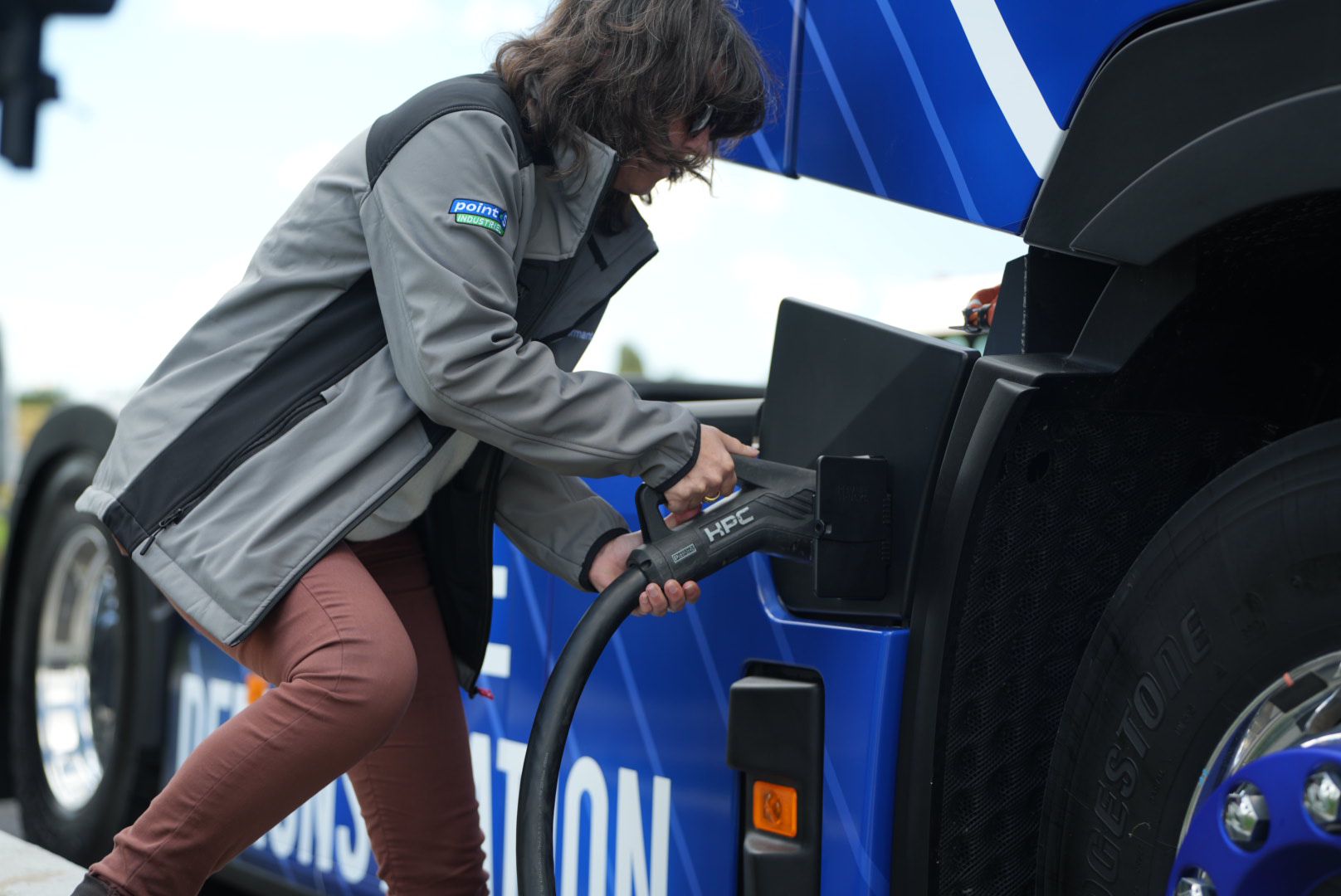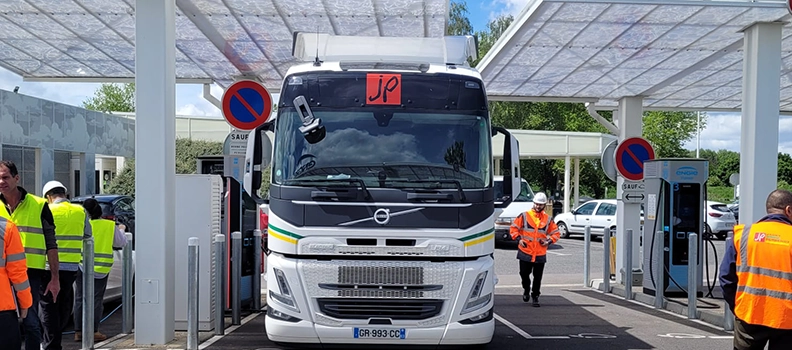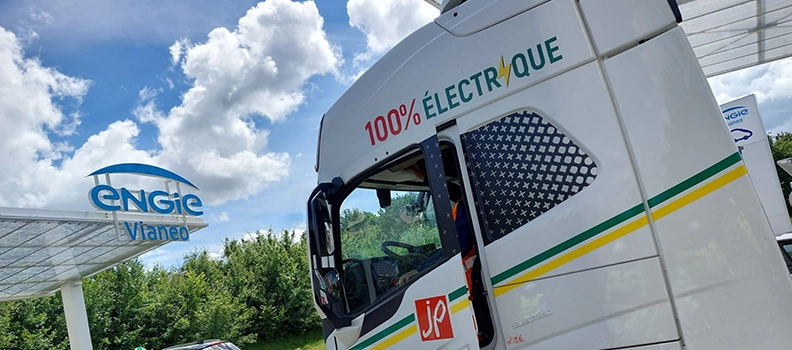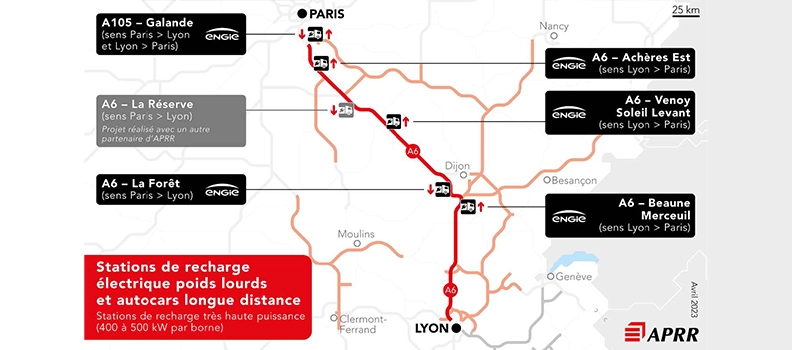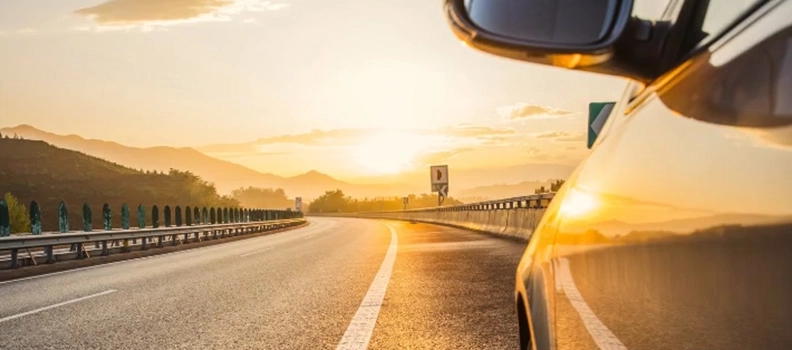Visit IAA Transportation 2024to be held in Hanover, Germany, will once again showcase the latest innovations in mobility and transportation.
On this occasion, ENGIE Vianeo will be present to underline the importance of a massive transition to electromobility for heavy goods vehicles, in the same way as the meteoric development of recharging for light electric vehicles.
Découvrez les défis et perspectives liés à la recharge des poids lourds électriques avec Clémence Fischer, Managing Director d’ENGIE Vianeo
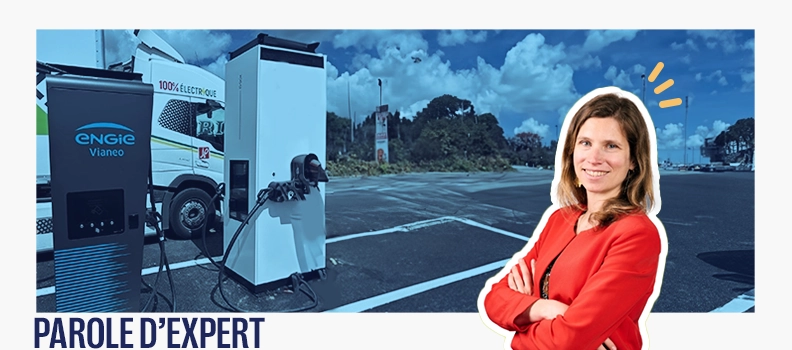
En quoi il y a une urgence à accélérer la transition des poids lourds vers la mobilité électrique et quels en sont les freins ?
While the electric car is now firmly established in the mobility landscape, the transition of heavy-duty vehicles to electric power is still an emerging trend. It should be remembered, however, that heavy mobility alone is responsible for almost 40% of transport-relatedCO2 emissions: facilitating the transition of heavy vehicles is therefore crucial to meeting the challenge of decarbonizing transport.
However, there is still a fear among motorists about the range of electric vehicles, which takes on a different dimension when it comes to hauliers on long journeys. In the market for electric truck recharging, we have to deal with the constraints of freight transport and the specific regulations to which drivers are subject.
In this segment, the economic stakes are higher, and journeys need to be particularly optimized. The recharging offer has to be adapted to the sector’s needs: certain timeframes have to be respected, and charging times have to coincide with drivers’ compulsory breaks (i.e. 45 minutes), etc. The technical barrier to electric truck charging has been overcome, but there is still a psychological barrier to overcome to reassure users.
Quel état des lieux dresser de la recharge en itinérance pour les mobilités lourdes ?
As heavy goods vehicles are by definition much more energy-hungry than light vehicles, the challenge of electrifying them is both qualitative and quantitative. Qualitative, because it requires very high-power charging station networks; quantitative, because it means multiplying the number of charging points and ensuring maximum station availability. At present, ENGIE Vianeo is a pioneer in the field of on-road electric charging infrastructures for heavy goods vehicles, both on major roads and in logistics zones and certain metropolitan areas.
With our 100% charging corridor dedicated to electric trucks, we have created the first network of its kind in France, comprising 5 stations between Lyon and Paris on APRR freeway service areas, enabling two trucks to be charged simultaneously. The special feature of this network is its recharging capacity of up to 480 kW, a world first on freeways.
The aim now is to replicate this corridor on other motorway networks, as well as in logistics zones, to provide a reliable national network for hauliers, with ultra-fast recharging at a frequency suited to their itineraries.
In addition to charging stations, ENGIE Vianeo is also supporting the transition of heavy goods vehicle fleets with complementary tools, enabling drivers to locate stations on the page dedicated to heavy mobility on our website.
A system for reserving charging slots will also soon enable them to avoid waiting at the charging station as much as possible. The construction of multi-energy stations to meet the needs of today’s transport fleets gives them access to several green energy vectors, and also promotes the transition.

ENGIE Vianeo accompagne cette transition en permettant aux chauffeurs de localiser les stations une page dédiée : cliquez ici
Plus d’informations sur IAA Transportation : cliquez ici
Comment est appréhendée la mobilité lourde à l’aune de la menace d’interdiction qui plane sur les véhicules thermiques ?
The threat applies to both light and heavy vehicles! Since April 2024, the European Commission has been pushing for legislation that includes very ambitious decarbonization targets: emissions from heavy-duty vehicles sold from 2030 onwards should be reduced by at least 45% compared with 2019, then by 65% in 2035 and 90% in 2040.
As a result, heavy-duty vehicle manufacturers are gradually switching to electric vehicles, making it all the more necessary to step up the construction of recharging infrastructures. In addition, the Alternative Fuel Infrastructure Regulation (AFIR) came into force on April 13, 2024, imposing a general objective of territorial coverage of charging points for both light and heavy vehicles. It calls for the installation of charging stations suitable for heavy vehicles on main roads from 2028, and on secondary roads from 2031.
In France, financial support is available in the form of a subsidy of up to €100,000 for the purchase of an electric truck (HGV, bus, coach). The installation of charging stations can also be subsidized. At European level, EU member states grant a 50% reduction in road tolls for electric trucks. Freeway service areas are already massively equipped with fast charging stations for light vehicles, since the obligation to do so came into force on January1, 2023, and will therefore also gradually be equipped with dedicated charging stations for heavy goods vehicles.
Download the press release
Rendez-vous au salon IAA Transportation
Du 16 au 22 septembre 2024
Deutsche Messe AG (Parc des Expositions)
Hanovre, Allemagne
Stand F29 – Hall 13
